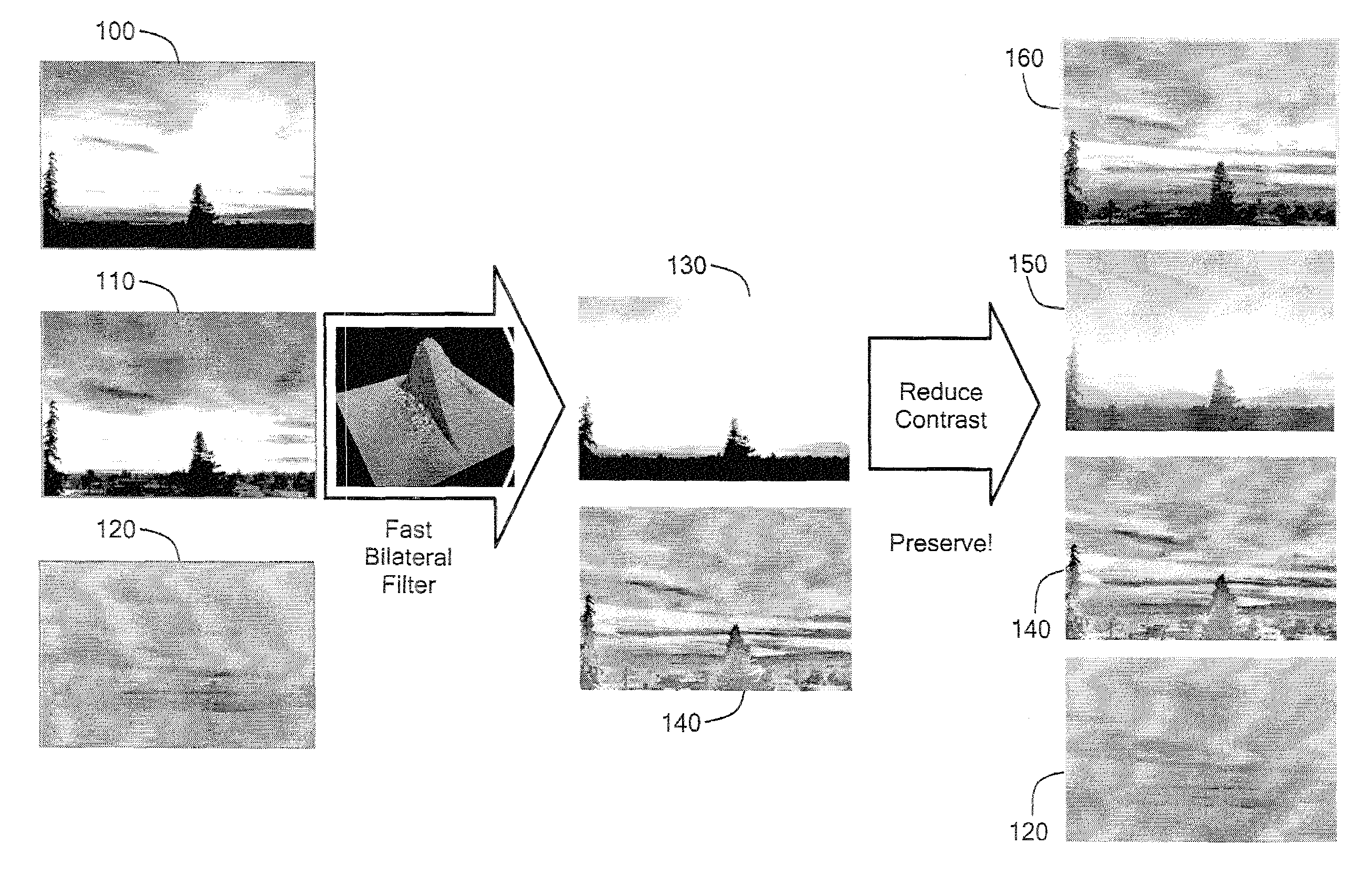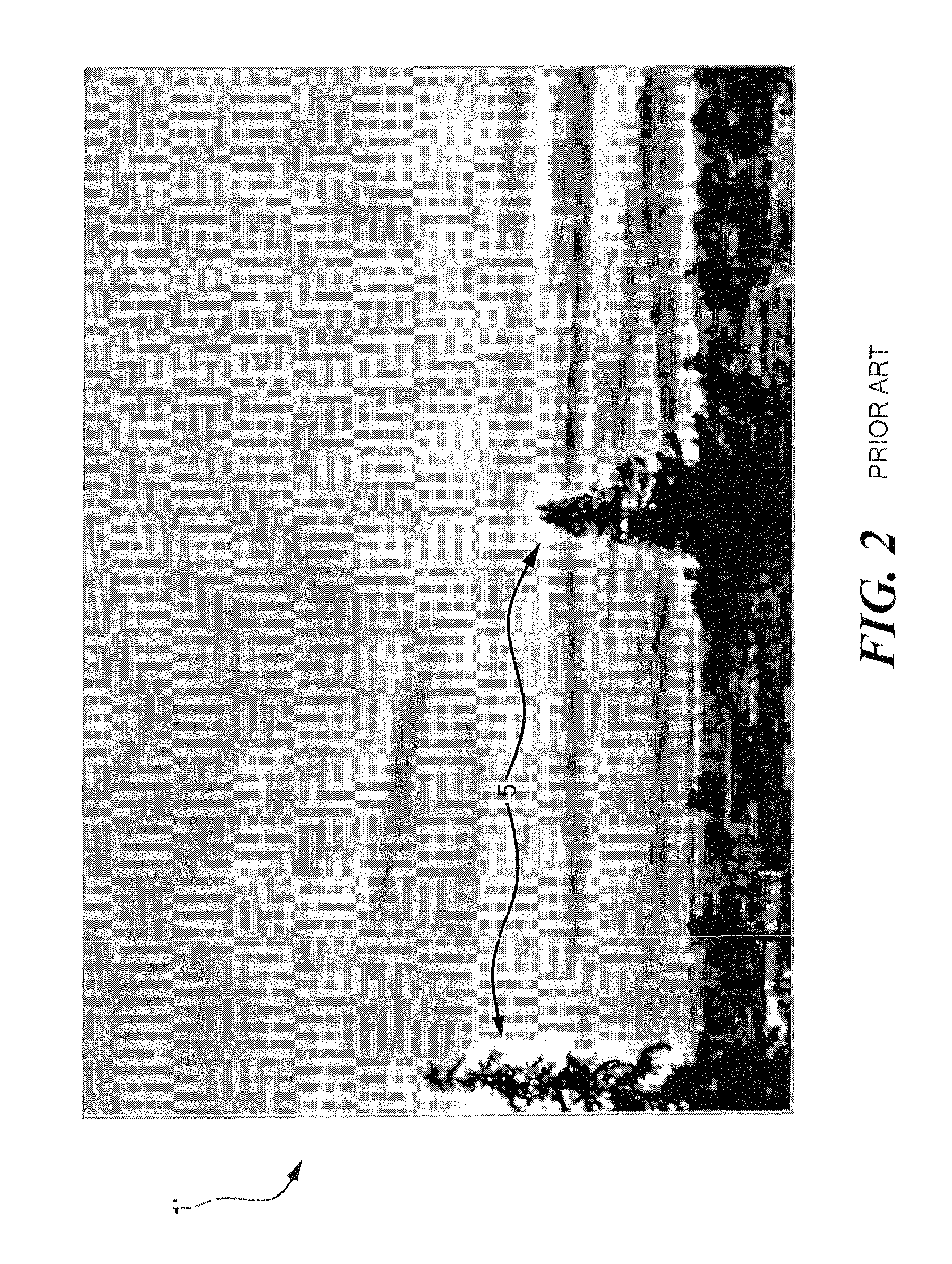Method of performing fast bilateral filtering and using the same for the display of high-dynamic-range images
a technology of high-dynamic range and fast bilateral filtering, applied in image enhancement, image analysis, instruments, etc., to achieve the effect of preserving detail, reducing image contrast, and preserving image detail
- Summary
- Abstract
- Description
- Claims
- Application Information
AI Technical Summary
Benefits of technology
Problems solved by technology
Method used
Image
Examples
Embodiment Construction
[0013]FIG. 1 shows an example of an image 1 wherein the sun is overexposed and the foreground is underexposed, therefore there is too much contrast in the image. This image is undesirable due to the underexposed and overexposed portions. There are several methodologies known in the art for reducing contrast, however each of these known methodologies for reducing contrast has certain drawbacks associated with them.
[0014]One method of providing contrast reduction is known as local tone mapping. Tone mapping operators are classified into global and local techniques. Because these techniques use the same mapping function for all pixels, most global techniques do not directly address contrast reduction. A limited solution uses S-shaped functions inspired from photography, thus preserving some details in the highlights and shadows. Unfortunately, contrast is severely reduced in these areas. Some have proposed interactively varying the mapping according to the region of interest attended b...
PUM
 Login to View More
Login to View More Abstract
Description
Claims
Application Information
 Login to View More
Login to View More - R&D
- Intellectual Property
- Life Sciences
- Materials
- Tech Scout
- Unparalleled Data Quality
- Higher Quality Content
- 60% Fewer Hallucinations
Browse by: Latest US Patents, China's latest patents, Technical Efficacy Thesaurus, Application Domain, Technology Topic, Popular Technical Reports.
© 2025 PatSnap. All rights reserved.Legal|Privacy policy|Modern Slavery Act Transparency Statement|Sitemap|About US| Contact US: help@patsnap.com



